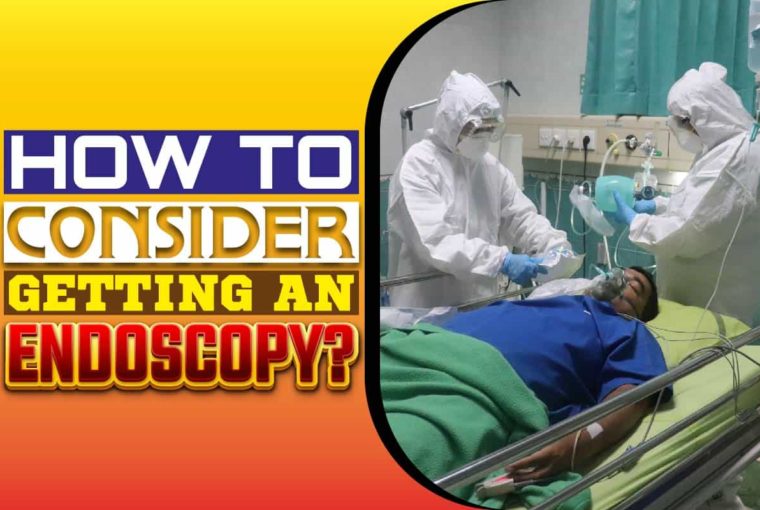An endoscopy is usually performed to look for cancerous changes. Prolonged inflammation in the digestive tract can damage the DNA of some cells, which can turn cancerous. These cells start multiplying abnormally and eventually become a large tumor.
However, before these growths become fully cancerous, they often cause certain signs and symptoms in the body. The goal of an endoscopy is often to catch these pre-cancerous growths and remove them before they turn into cancer.
People who have long-standing digestive tract illnesses are at a high risk of developing cancer ,and if you’re one of those, your doctor might want to perform an endoscopy. This article provides a brief review of what an endoscopy is and when it’s performed.
What Is An Endoscopy?
An endoscopy is when a doctor takes a long, flexible tube attached to a camera to take a look at the digestive tract. If you’ve been Googling about endoscopy and getting overwhelmed by all the information out there, here’s a concise review of the different types of endoscopy.
There are two broad types of endoscopy. In an upper GI tract endoscopy, a flexible tube is inserted via the mouth. The doctor is then able to visualize the esophagus, the stomach, and the first part of the small intestine on a screen.
Upper GI endoscopies are usually performed to view ulcers, pre-cancerous growths, and cancers of the lower esophagus, the stomach, and the small intestine. They are also used to detect bleeding varices, which are dilated, bleeding veins in the lower esophagus and arise as a complication of liver failure.
One common reason for an upper GI endoscopy is a stomach ulcer. And over-the-counter painkillers are an extremely common cause of stomach ulcers, which is why you should take them with caution. Here are some more tips to keep your gut healthy.
This page on endoscopy sydney has more information on upper GI endoscopies, so check it out if you’re located in Australia.
The goal of a lower GI endoscopy is to visualize the large intestine. A flexible tube is inserted into the anal canal and depending on how far it goes, the endoscopy can be classified as a sigmoidoscopy or a colonoscopy. (The sigmoid colon is the last part of the large intestine).
Just like upper endoscopies, lower GI endoscopies are usually performed to look for pre-cancerous growths like polyps.
Sometimes, a lower GI tract endoscopy is performed to detect Inflammatory Bowel Disease, in which the gut lining develops characteristic changes that can be picked up on an endoscopy.
A special subtype of endoscopy is called endoscopic retrograde cholangiopancreaticography (ERCP), which is usually used to visualize the gallbladder and pancreas problems (for example a gallstone).
While gallstones are usually diagnosed by an ultrasound, your doctor may recommend an ERCP procedure if you have gallstone symptoms but unclear findings on an ultrasound.
When Should I Consider Getting An Endoscopy?
You should consider getting an endoscopy if you develop what doctors call “red flag” signs and symptoms. These include:
- Difficulty or pain swallowing in the setting of long-standing heartburn
- Unexplained weight loss
- Unexplained fever
- Loss of appetite — feeling full after eating just a bit of food
- Blood in stools or vomit
- Chronic diarrhea or constipation
Various combinations of these signs may mean an underlying digestive tract mass, which can obstruct the tract or bleed, leading to bowel habit changes and blood in stools, respectively.
You should know that just because you have some of the symptoms in this list doesn’t necessarily mean you have cancer. Non-cancerous conditions can also lead to similar symptoms, which is why an endoscopy is performed to rule out cancer.
Unexplained weight loss and fever can be caused by a wide range of cancers and if there are no accompanying GI symptoms, an endoscopy may not be helpful.
These symptoms may also be caused by precancerous growths. In this case, the doctor may remove the mass during an endoscopy and send it to a pathology lab. The mass is then observed using a microscope to make sure it’s not cancer.
It’s also important to note that doctors recommend getting a colonoscopy every 10 years once you cross 50, regardless of your gender. As you grow older, your chances of developing colon polyps (pre-cancerous growths) increase.
Polyps may bleed and cause blood to appear in the stools, which is an alarming finding if you’re over 50 and warrants a colonoscopy. You may need to have colonoscopies earlier and more frequently if you’ve had prior polyps or have a family history of colon cancer.
How To Prepare For An Endoscopy?
To get a good view of the digestive tract, there should be no food present inside. If you’re about to have an upper GI endoscopy, your doctor will ask you to fast for 7-8 hours before the procedure.
For a lower GI endoscopy, you may be given a laxative to help clear the colon.
You should also arrange for someone to drive you back after an endoscopy because patients are often sedated before the procedure. Sedation keeps you comfortable during the endoscopy but you may experience drowsiness after the procedure is over.
Finally, if you want to learn more about all the different types of endoscopies and how and why they’re done, here’s a list of top medical and health encyclopedias online.




